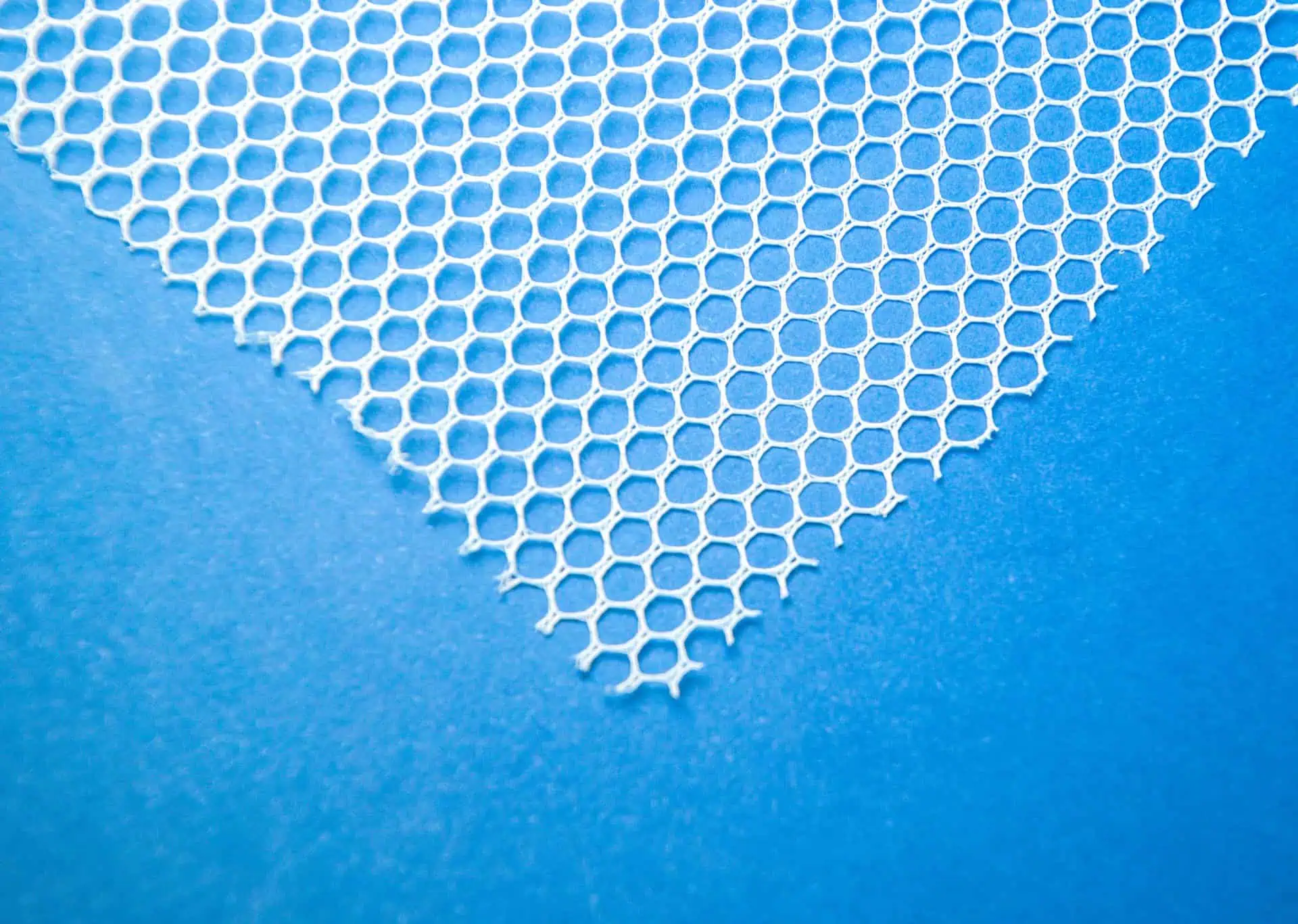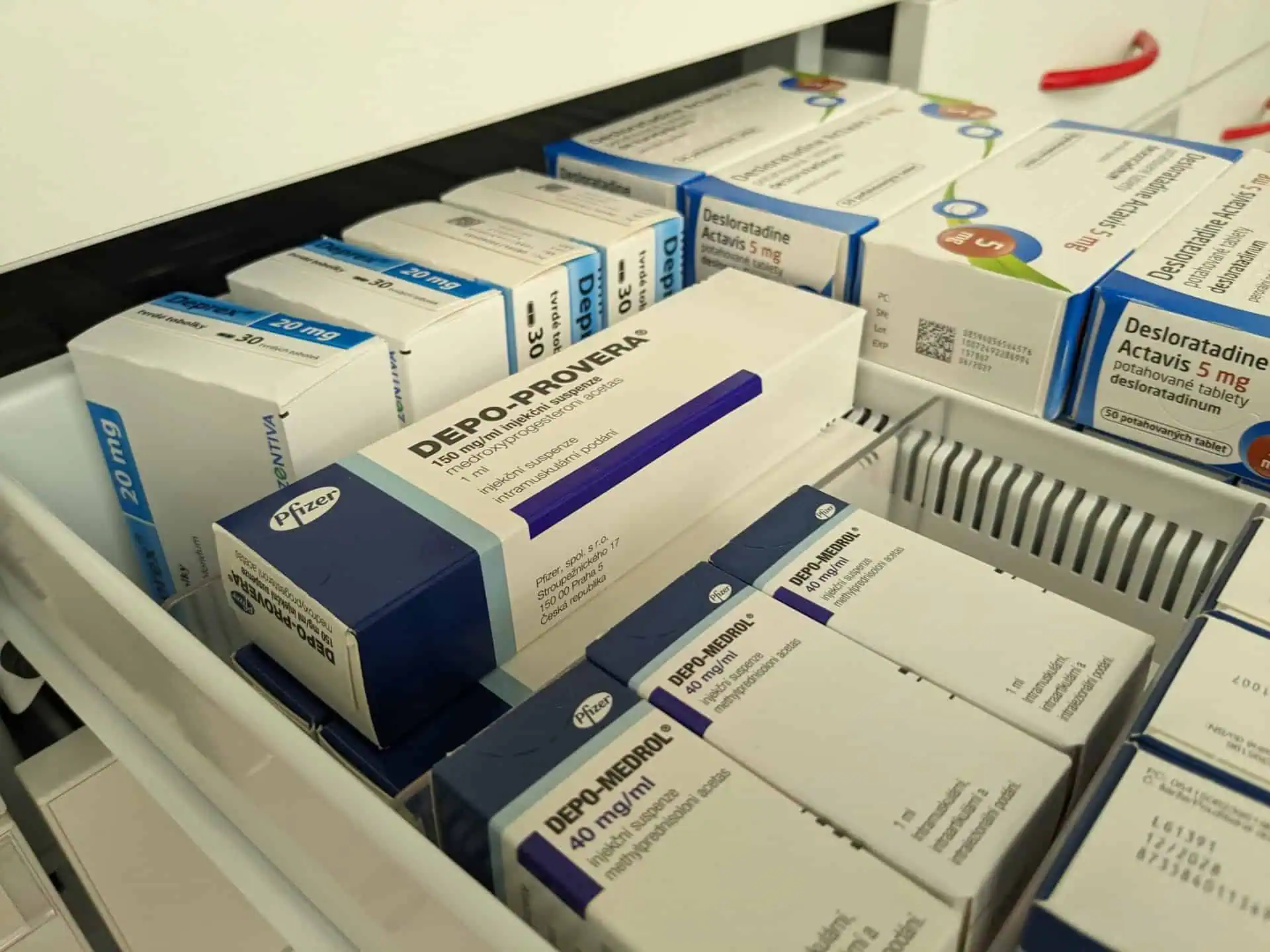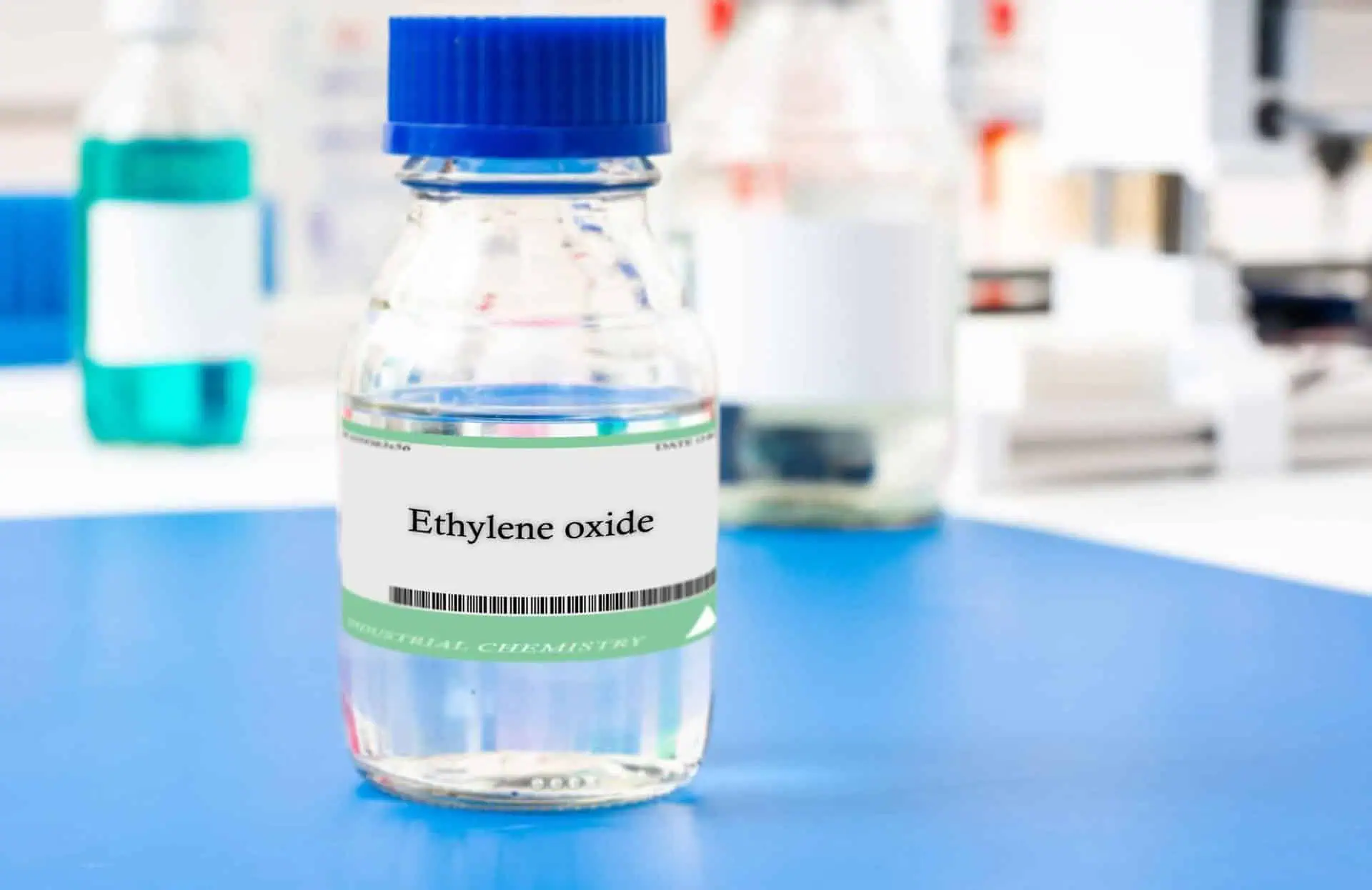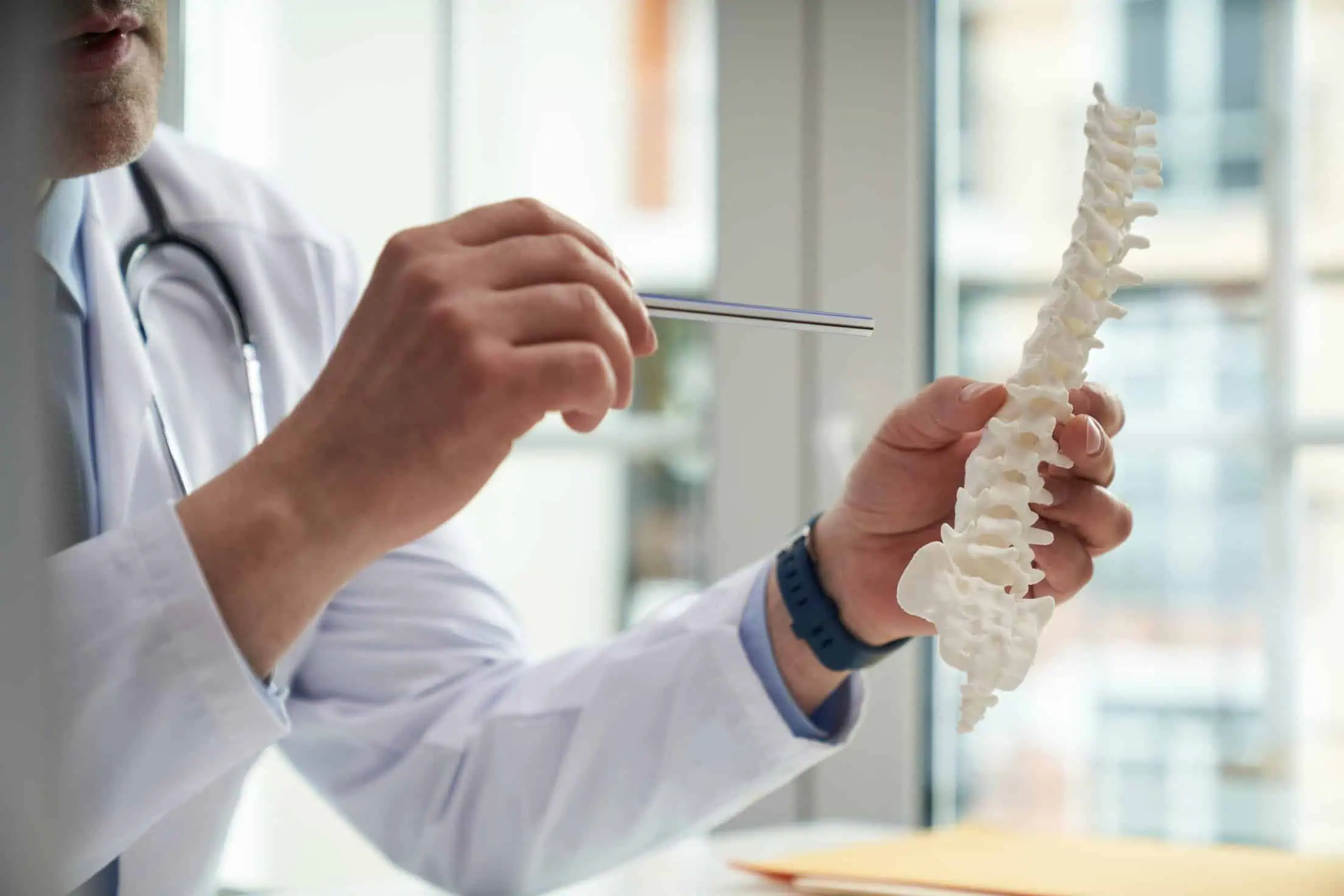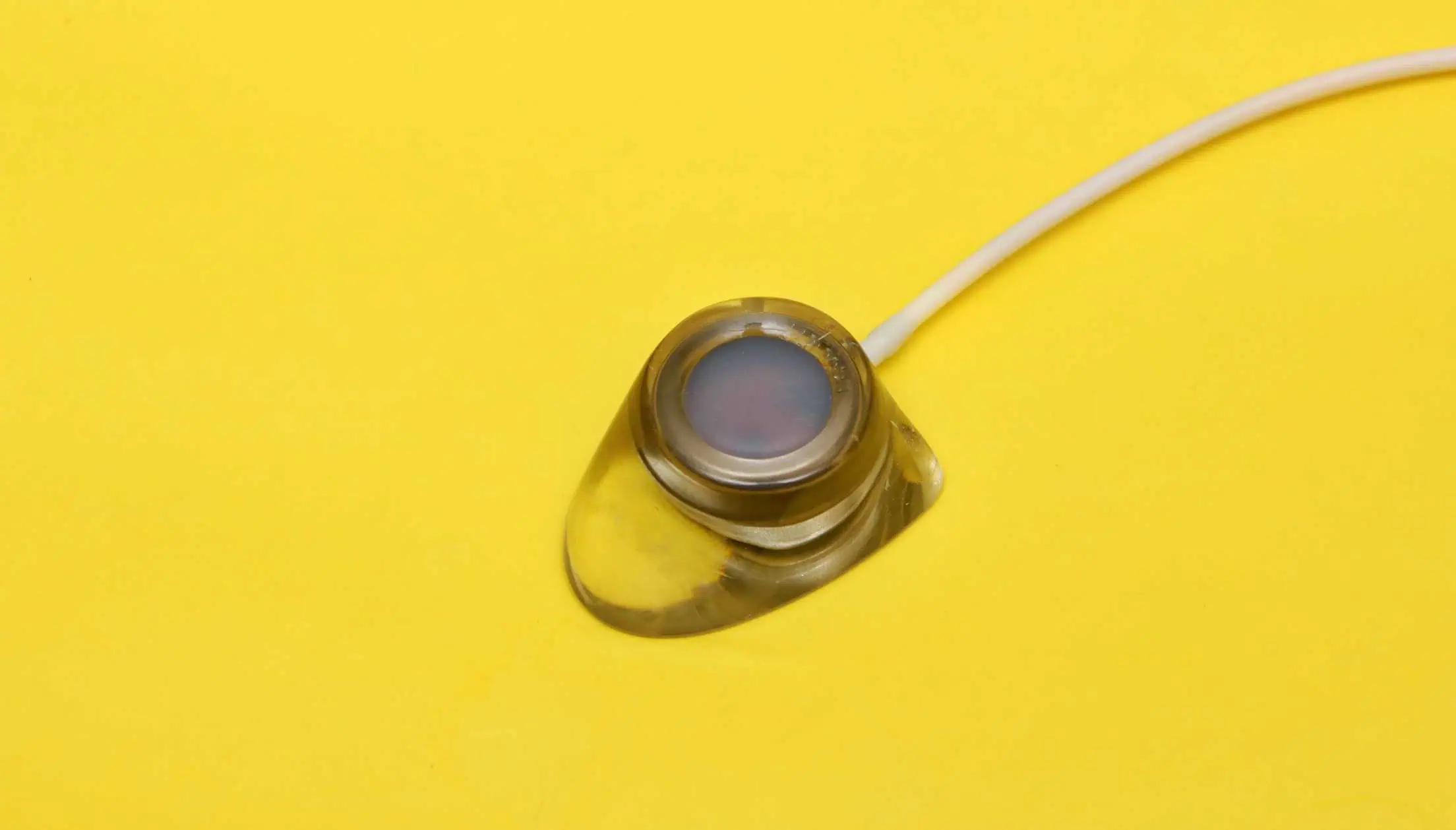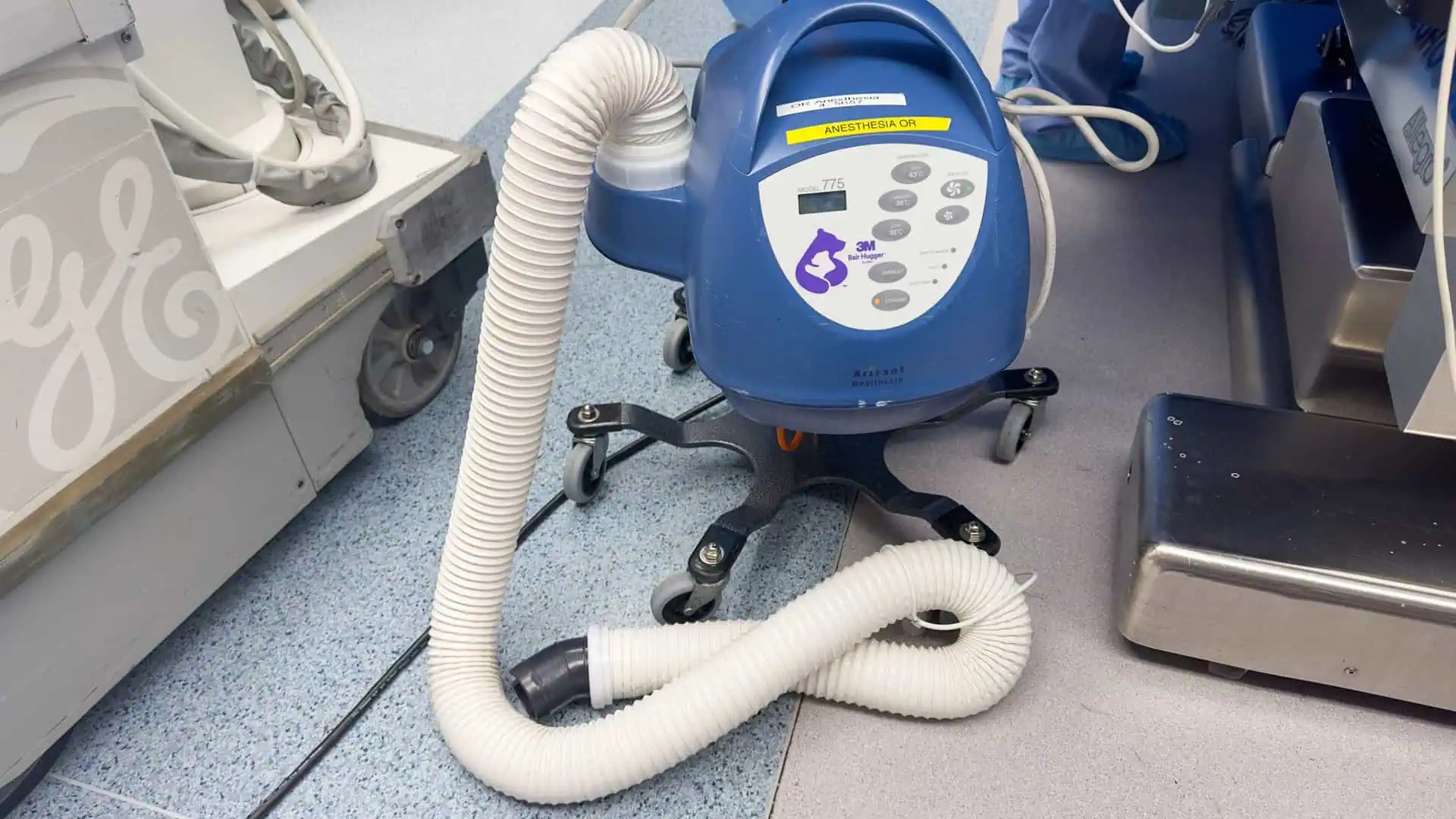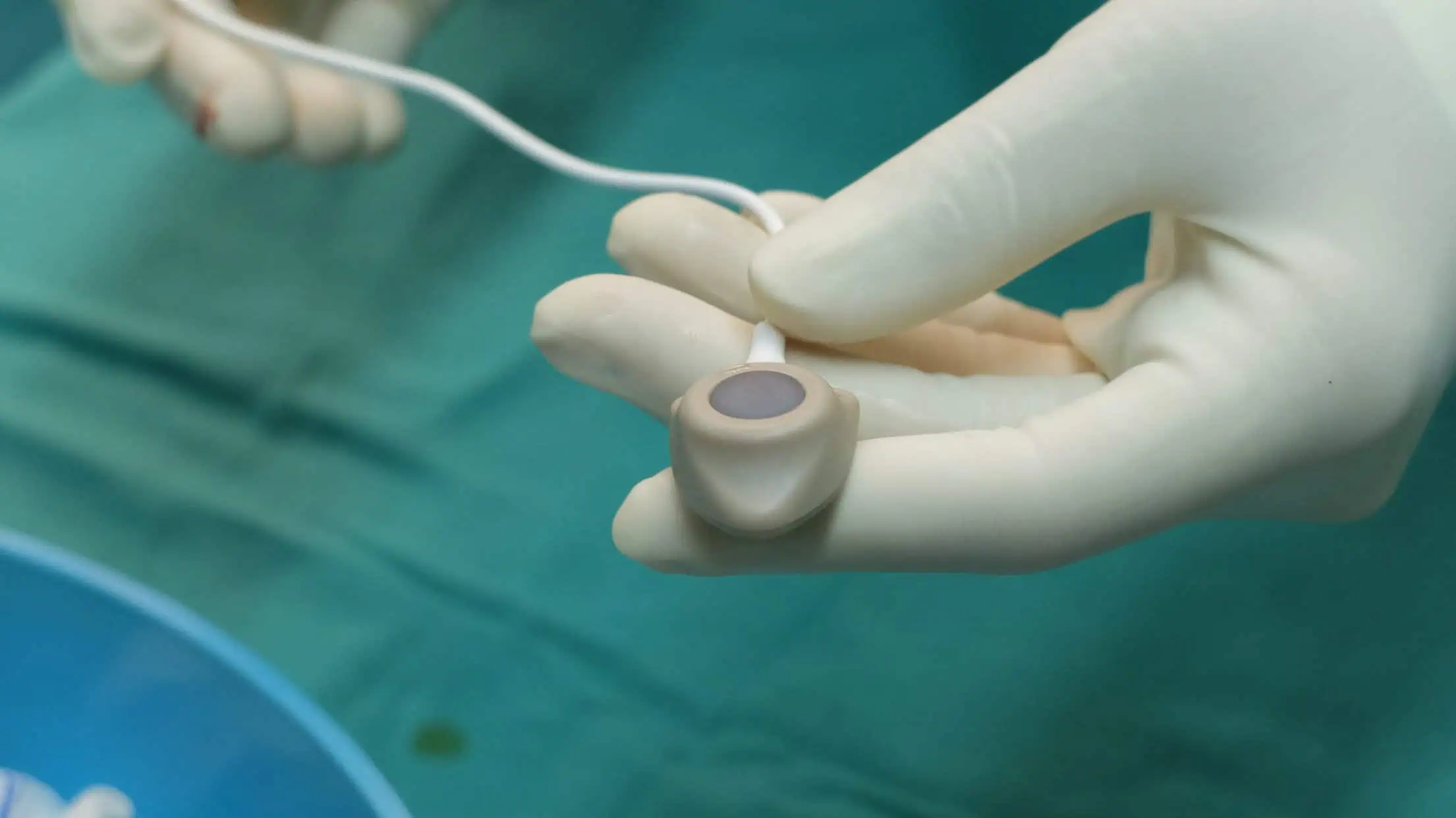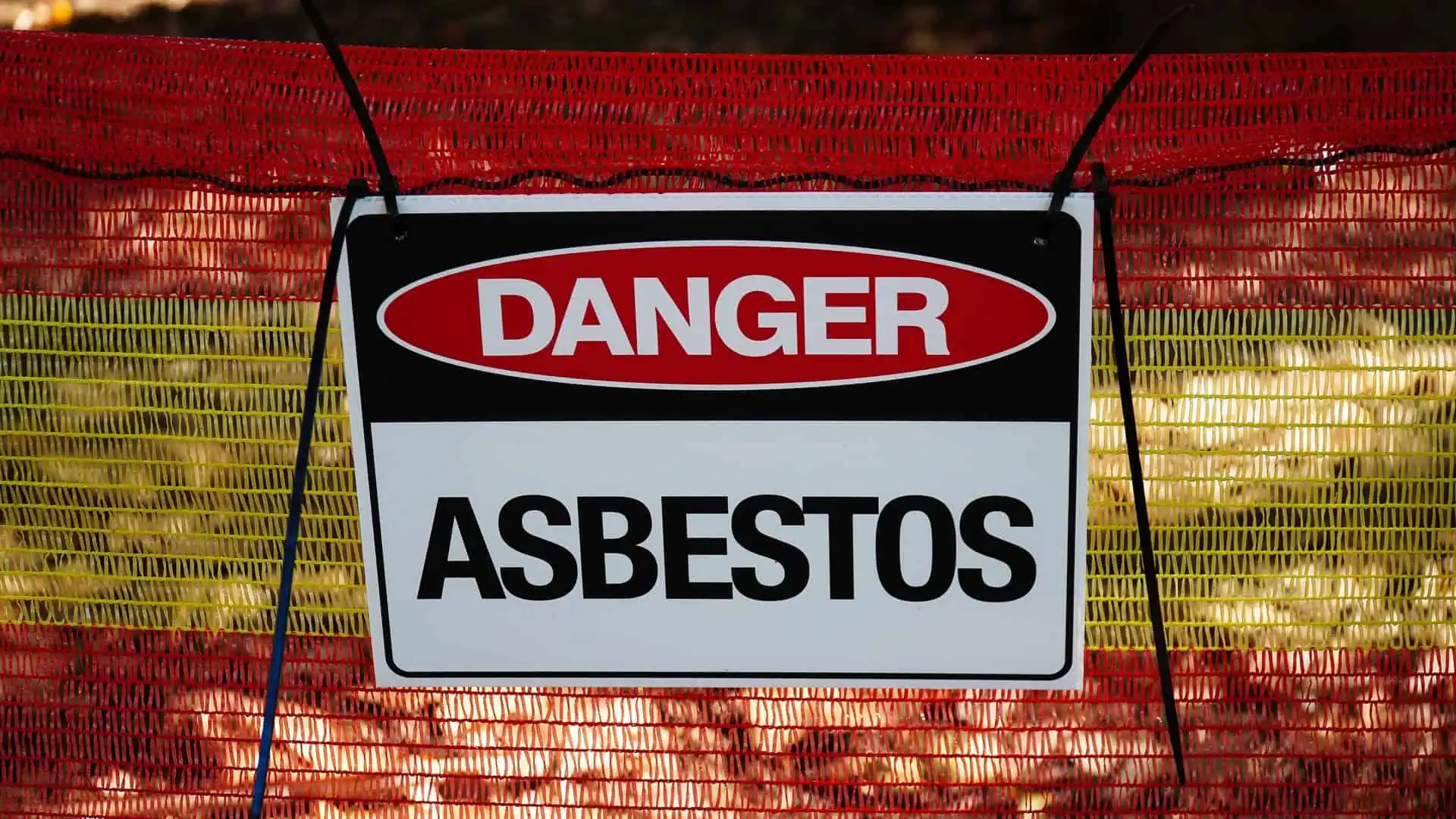Benzoyl Peroxide (BPO) Acne Products Lawsuit
- Last Updated: July 14th, 2025

Attorney Jessica Paluch-Hoerman, founder of TruLaw, has over 28 years of experience as a personal injury and mass tort attorney, and previously worked as an international tax attorney at Deloitte. Jessie collaborates with attorneys nationwide — enabling her to share reliable, up-to-date legal information with our readers.
Legally Reviewed
This article has been written and reviewed for legal accuracy and clarity by the team of writers and legal experts at TruLaw and is as accurate as possible. This content should not be taken as legal advice from an attorney. If you would like to learn more about our owner and experienced injury lawyer, Jessie Paluch, you can do so here.
Fact-Checked
TruLaw does everything possible to make sure the information in this article is up to date and accurate. If you need specific legal advice about your case, contact us by using the chat on the bottom of this page. This article should not be taken as advice from an attorney.
Key takeaways:
- Benzoyl peroxide is a powerful acne treatment for mild to moderate acne, working to reduce inflammation and kill bacteria on the skin's surface.
- Overuse or misuse of benzene acne products can result in dryness, peeling, redness, and irritation.
- It is recommended to conduct a patch test before using the product to check for any adverse reactions.
Overview of the Benzoyl Peroxide (BPO) Acne Products Lawsuit [2025 Update]
On this page, we’ll provide an overview of Benzoyl Peroxide (BPO) acne products lawsuit, potential side effects of benzene exposure, information on benzene acne product recalls, and much more.
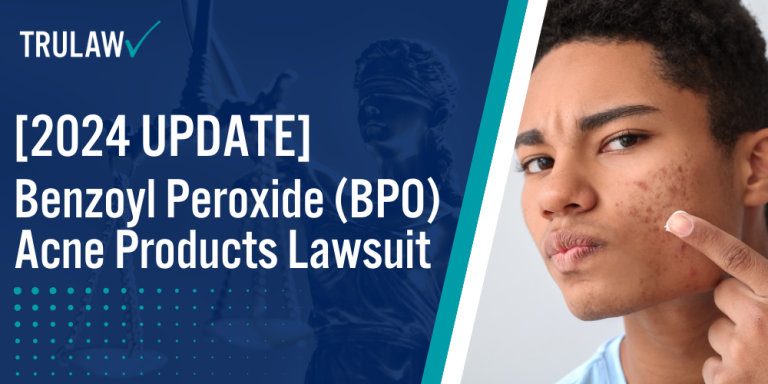
Intro to Benzoyl Peroxide Acne Products
Benzoyl Peroxide is a well-known acne treatment that has been used for several decades.
It helps manage bacterial contribution to acne and keeps pores clear of blockages.
Here’s a closer look at the key aspects of Benzoyl Peroxide:
- Benzoyl Peroxide: functions by releasing oxygen-free radicals that kill Cutibacterium acnes, the bacteria implicated in acne proliferation. It is noteworthy for its role in reducing inflammation and exfoliating the skin.
- Applications: Benzoyl Peroxide can be found in various products, such as creams, gels, and washes, formulated at concentrations ranging from 2.5% to 10%.
- Mechanism of Action: This compound works on the skin’s surface and within the hair follicles where it combats bacterial growth, which contributes to acne.
If you or a loved one has experienced adverse health effects after using a benzoyl peroxide acne product, you may be eligible to seek compensation.
Contact TruLaw today using the chat on this page to receive an instant case evaluation to file a benzoyl peroxide lawsuit.
Table of Contents
Chemical Properties of Benzoyl Peroxide
Benzoyl Peroxide (BPO) is known for its significant role in the treatment of acne vulgaris.
Its chemical properties lend it the ability to act against acne lesions and improve skin conditions.
Acne Treatment Mechanisms
Topical benzoyl peroxide is a mainstay in acne therapy due to its action on the skin.
In understanding its mechanisms:
- Benzoyl Peroxide exhibits keratolytic and comedolytic effects, meaning it helps to loosen keratin, a protein in the skin, thereby preventing dead cells from clogging hair follicles.
- It possesses antibacterial properties specifically against Propionibacterium acnes, the bacteria implicated in acne.
- By generating free radicals, Benzoyl Peroxide creates an inhospitable environment for the bacteria.
- It reduces sebum production, which can exacerbate acne if overproduced and trapped in hair follicles.
- The compound speeds up the clearing of skin by increasing the turnover rate of epithelial cells.
- As an oxidizing agent, it helps in clearing the follicular duct and allows oxygen to enter, inhibiting the anaerobic bacteria that can prosper in the follicles.
Interaction with Skin Cells
Benzoyl Peroxide is renowned for its effectiveness in treating acne-prone skin by targeting the bacteria that cause acne.
This compound, upon contact with the skin, initiates a chemical process that helps in reducing inflammation and preventing future outbreaks.
When Benzoyl Peroxide interacts with the skin, the following sequence of events typically occurs:
- The compound breaks down upon application, releasing oxygen; this is believed to help kill bacteria by introducing an oxidized environment.
- Skin absorption leads to the breakdown of Benzoyl Peroxide into benzoic acid, which is less irritating and has some anti-inflammatory effects.
- It has been observed to induce peeling, which is beneficial for disrupting the formation of new acne lesions.
- As an initiator of free radicals, it works to modify the environment within the hair follicles, targeting the microbial colonies there.
By understanding these specifics of benzoyl peroxide, one can appreciate its efficacy as a common acne treatment option.
Usage Guidelines: Benzoyl Peroxide Acne Products
Adhering to the specific usage guidelines for any benzoyl peroxide acne product is crucial to ensure effectiveness and reduce the likelihood of skin irritation.
These guidelines typically include detailed application instructions and recommendations for dosage and frequency, as outlined by healthcare professionals.
Application Instructions
Before applying a benzoyl peroxide acne product, it’s important to start with clean and dry affected areas.
Here is the proper procedure to follow:
- Cleanse the skin with a mild, non-irritating cleanser to remove any impurities and excess oil.
- Dry the skin gently with a soft towel, avoiding any rubbing or harsh treatment that could irritate the skin.
- Read the patient information leaflet accompanying the acne product for any specific directions related to the common brand.
- Dispense a small amount of the product—usually the size of a pea—and spread a thin layer evenly over the affected area.
- Gently rub the product into the skin with clean fingertips, avoiding the eyes and mouth.
- Wash your hands immediately after the application to prevent any unintentional application to other areas of the skin.
Dosage and Frequency
The proper dose and frequency of benzoyl peroxide use are vital to both its effectiveness and minimizing potential skin irritation.
Consider the following when determining how often to apply the product:
- Consult with a healthcare professional before beginning treatment to establish a personalized treatment plan.
- Follow the product’s directions closely, as concentrations of benzoyl peroxide can vary from 2.5% to 10%.
- Start with the lowest concentration available, especially if you have sensitive skin or are trying benzoyl peroxide for the first time.
- Apply the benzoyl peroxide product no more than once or twice daily, as overuse can lead to excessive dryness and irritation.
- Monitor your skin’s reaction over time and adjust the frequency of use if necessary, either reducing or increasing as skin tolerance develops.
- Maintain a consistent treatment regimen as instructed by the healthcare professional to achieve the best results in treating acne.
Side Effects of Benzene Exposure
Exposure to benzene, a known carcinogen found in certain acne products, can cause various skin reactions.
It is crucial to be aware of the specific adverse effects and the necessary precautions.
Skin Irritation and Reactions
When benzene-contaminated products come into contact with the skin, they can lead to a range of dermatological issues.
Skin irritation and redness are common initial symptoms.
Below is a list of dermatological reactions one may experience:
- Peeling: Shedding of the outer skin layer, often resulting in flakiness.
- Contact dermatitis: A type of allergic reaction that results in a red, itchy rash.
- Itching: Persistent discomfort leading to the need to scratch.
- Swelling: Inflammation and puffiness of the affected skin area.
If these symptoms persist or worsen, it is imperative to seek medical help.
Special Considerations
Certain precautions can help mitigate the adverse effects of benzene exposure.
Consider the following measures to protect the skin:
- Wear protective clothing: Donning apparel that shields exposed skin can help prevent direct contact with contaminated products.
- Avoid heat exposure: Keep skin care products in cooler environments to reduce the risk of benzene formation.
- Patch testing: Before widespread application, conducting a test on a small skin patch can identify adverse reactions.
- Consultation with a healthcare provider: They can offer guidance on alternative acne treatments and possible side effects.
Utilizing protective clothing and practices may significantly reduce the risk of benzene-related skin issues.
Comparative Treatments: Benzoyl Peroxide
Choosing the right acne treatment can be challenging, with various options available.
This section examines the efficacy of benzoyl peroxide in comparison to other treatments and its role in combination therapies.
Benzoyl Peroxide vs. Other Acne Treatments
Benzoyl peroxide (BPO) is a common and effective treatment for acne.
Its antibacterial properties make it effective against the types of bacteria that can lead to acne breakouts.
Here are direct comparisons with other treatments:
- Salicylic Acid: Often used to treat milder acne, salicylic acid works as a keratolytic, causing cells of the epidermis to shed more easily, thereby preventing pores from clogging.
- Antibiotics: While antibiotics can be effective against acne-causing bacteria, concerns about antibiotic resistance have made treatments like benzoyl peroxide a preferred first-line therapy.
- Retinoids: These are vitamin A derivatives that work notably through accelerating cellular turnover.
- Azelaic Acid: has anti-inflammatory and antibacterial properties. It’s used for acne and rosacea. For some people, it’s less irritating than benzoyl peroxide.
Combination Therapies
Therapy that includes benzoyl peroxide as a component tends to have increased efficacy due to its multifaceted approach to treating acne.
Consider the following combination products:
- Benzoyl Peroxide and Clindamycin: This combination offers the immediate bactericidal effect of benzoyl peroxide with the antibiotic action of clindamycin.
- Benzoyl Peroxide and Adapalene: This pairing combines benzoyl peroxide’s ability to kill bacteria with adapalene’s ability to prevent the formation of comedones.
- Triple Therapy: This includes a topical retinoid such as tretinoin or benzoyl peroxide and an oral or topical antibiotic such as clindamycin. A study reflected its high efficacy compared to monotherapies.
- Benzoyl Peroxide and Salicylic Acid: Uncommon but still used, this combination may provide both antibacterial and advanced exfoliating effects. However, it may be more drying to the skin.
Benzene Acne Product Recall Information
Recent findings by an independent laboratory have raised concerns about the presence of benzene in certain acne products, prompting a call for a recall of affected items.
Types of Benzene Acne Products
A variety of benzoyl peroxide products, which are widely used in acne treatment, have been found to contain traces of the carcinogenic substance benzene.
The affected products include, but are not limited to:
- Gels
- Creams
- Lotions
Common Benzene Acne Brands
Recent investigations have revealed alarming levels of benzene, a known carcinogen, in several acne treatment products.
This discovery has raised concerns among consumers and healthcare professionals alike.
Common brands found with elevated levels of benzene include:
- Proactiv
- Clinique
- Clearasil
Products from PanOxy and other well-known brands were also listed in the laboratory’s findings
Concerns are higher regarding products with higher concentrations of benzoyl peroxide.
Choosing the Appropriate Product
In the wake of recalls involving acne treatment products, it’s crucial to exercise caution and diligence when choosing a new acne remedy.
Ensuring the product’s safety and its compatibility with your skin type can significantly impact its effectiveness and your overall skin health.
When selecting an acne product post-recall, consider the following aspects to ensure safety and effectiveness:
- Confirm that the product is not listed in the recall.
- Check for reputable brands that have had no previous safety issues.
- Opt for products with lower concentrations of benzoyl peroxide as a precaution.
- Consult with a healthcare provider to understand which type (gel, cream, lotion) is suitable for your skin type.
Acne sufferers should remain vigilant and refer to official FDA announcements or consult with their dermatologist for the most current information regarding safe acne treatment options.
Safety Information For Benzene Acne Products
When considering benzoyl peroxide acne treatments, it’s important to be aware of safety concerns regarding benzene contamination and how it can impact health, particularly in special circumstances such as pregnancy and breastfeeding.
Allergy and Sensitivity
Those using benzoyl peroxide acne products should be vigilant for signs of an allergic reaction.
Symptoms can range from mild to severe and may include:
- Redness
- Swelling
- Itching
- Peeling
- Severe rash
- Difficulty breathing
If you experience a severe allergic reaction, contact a poison control center immediately.
Before full use, it is advised to test a small amount of the product on your skin to check for any sensitivity.
Overdose and Missed Doses
Exceeding the recommended dosage of benzoyl peroxide can lead to increased side effects, while a missed dose can interrupt the treatment’s effectiveness.
It’s important to follow usage instructions closely and consult a healthcare professional if you have concerns about overdose or missed applications.
While benzoyl peroxide is generally safe when used as directed, there are considerations for overdose and handling of missed doses:
- Apply only the recommended amount; using more can increase the risk of side effects.
- If you suspect an overdose, seek medical advice promptly.
- If a dose is missed, apply it as soon as you remember, but not if the next dose is nearly due.
- Never apply a double dose to make up for a missed one.
Always adhere to the prescribed treatment routine, and avoid compensating for missed doses in a way that deviates from medical advice.
Usage During Pregnancy and Breastfeeding
The decision to use benzoyl peroxide during pregnancy and breastfeeding requires careful consideration and guidance from a healthcare provider due to limited research on its safety for pregnant women and potential risks to the baby.
The use of benzoyl peroxide during pregnancy and breastfeeding should be approached with caution:
- There’s limited research on its safety in pregnant women; it’s best to consult a healthcare provider.
- Small amounts may be absorbed through the skin, meaning potential exposure to the baby.
- When breastfeeding, avoid applying the product to areas that might come into contact with a baby’s skin.
- Instead, consider alternative acne treatments or dietary supplements after a medical problem and proper consultation.
It’s essential for breastfeeding mothers to speak with a healthcare provider to ensure the safety of both mother and child.
Practical Tips and Advice: Benzoyl Peroxide
Benzoyl peroxide is a potent acne-fighting ingredient that can provide significant benefits when used properly.
To maximize its effectiveness and minimize potential discomfort, consider these application tips and management strategies.
Maximizing Treatment Benefits
To enhance the treatment advantages of benzoyl peroxide, it’s important to incorporate key application techniques.
Here’s how a person can make the most of their benzoyl peroxide regimen:
- Cleanse gently: Before applying benzoyl peroxide, use a mild cleanser to remove dirt and oil from the skin without over-drying.
- Pat the skin dry: After cleansing, it’s important to pat dry with a towel—do not rub, as this can irritate the skin.
- Apply a thin layer: Only a small amount is needed—applying more doesn’t improve results but can increase irritation.
- Start slowly: To allow the skin time to adjust, begin with a lower concentration and gradually increase frequency.
- Consistent use: Regular application as part of daily personal care is more effective than sporadic treatment.
- Use as directed: Missing applications can diminish the efficacy of treatment.
Managing Side Effects
Benzoyl peroxide is effective, but it can also lead to side effects in some individuals.
To manage these while continuing treatment, consider these tips:
- Moisturize: Apply an oil-free moisturizer to combat the dryness that benzoyl peroxide may cause.
- Sun Protection: Using a broad-spectrum sunscreen daily helps protect skin from increased sun exposure sensitivity caused by benzoyl peroxide.
- Reduce Frequency: If severe dryness or peeling occurs, reduce application frequency to allow the skin to recover.
- Avoid Harsh Products: Skip using other potentially irritating skin treatments or personal care products in conjunction with benzoyl peroxide.
- Monitor Skin Sensitivity: Formulations with lower concentrations of benzoyl peroxide tend to be less irritating for those with sensitive skin.
- Trial and Adjust: Everyone’s skin is different; some may need to experiment with frequency and concentration to find what works best for them without adverse effects.
Regulating Benzoyl Peroxide Levels
Benzoyl peroxide is broadly used in acne treatment products, but its regulation is essential due to potential health risks associated with high levels of this chemical.
FDA Approval Status and Guidelines
The Food and Drug Administration (FDA) approves benzoyl peroxide as a medication for acne treatment under certain concentration levels.
Healthcare professionals recommend adherence to FDA guidelines to ensure safety.
The following items detail the FDA’s stance and regulatory measures:
- FDA categorizes benzoyl peroxide as Generally Recognized As Safe and Effective (GRASE) for over-the-counter use in concentrations up to 10%.
- Mandatory labeling requirements exist for all benzoyl peroxide products, detailing proper usage and warning against overexposure.
- FDA sets forth manufacturing practices that ensure the production of benzoyl peroxide meets established safety standards.
- The FDA periodically reviews data to assess the need for any regulatory changes to usage guidelines.
- When reports of adverse effects are received, the FDA may reassess the compound’s safety and update recommendations.
- Healthcare professionals are encouraged to report any benzoyl peroxide-related side effects to the FDA’s MedWatch program.
The FDA maintains a rigorous review system to ensure the safety and efficacy of benzoyl peroxide products in the medical field.
World Health Organization Recommendations
The World Health Organization (WHO) provides additional guidelines to international healthcare communities regarding the external use of benzoyl peroxide.
Below are key recommendations from the WHO:
- The WHO lists benzoyl peroxide as an essential medication for common skin diseases, emphasizing its importance in medical treatments.
- WHO advises manufacturers to adhere to international pharmaceutical standards to prevent contamination with benzene or other harmful substances.
- The WHO endorses ongoing research to monitor the effects of benzoyl peroxide use and to gather comprehensive data on its safety profile.
- It is recommended that healthcare professionals stay informed about global health advisories concerning benzoyl peroxide.
- WHO collaborates with regulatory bodies like the FDA to synchronize safety regulations.
By following WHO and FDA guidelines, healthcare providers can ensure the responsible administration of benzoyl peroxide in treatments.
Patient and User Experiences: Benzoyl Peroxide Use
Patients widely use Benzoyl Peroxide to treat acne, and their experiences vary depending on factors such as skin type and severity of the condition.
Testimonials and Reviews
Testimonials from users often reflect the effectiveness of benzoyl peroxide in reducing outbreaks.
Here are some common points raised by users:
- Reduction in acne: Many users report a significant decrease in their acne after consistent use.
- Irritation: A small percentage experiences skin irritation, which typically lessens with time.
- Doctor recommendations: Often initiated based on a doctor’s advice which indicates trust in the medicine’s efficacy.
- Different strengths: Users appreciate the availability of different strengths of benzoyl peroxide, allowing them to find one that suits their skin sensitivity.
- Long-term use: Feedback on long-term use suggests that it continues to be effective without the need for a stronger prescription.
- Ease of use: The simple application process is frequently mentioned as a benefit by patients.
Community Discussions
In community discussions, users and patients often share tips and their personal routines when using benzoyl peroxide.
Key takeaways include:
- Products with benzoyl peroxide: Users advise on specific brands and formulations they found effective.
- Managing side effects: Tips on how to minimize irritation, such as gradually introducing the product.
- Children’s use: Caution is advised when using benzoyl peroxide on children, and many suggest contacting a doctor first.
- Combining treatments: Some discuss the benefits of complementing benzoyl peroxide with other treatments under the supervision of a healthcare provider.
- Contact concerns: Users remind others to avoid contact with sensitive areas like the eyes and nose and to use a gentle cleanser.
- Expectations setting: Experiences shared often help set realistic expectations for new users regarding the timeframe for seeing improvements.
Frequently Asked Questions
-
For optimal results, one should clean the skin with a mild cleanser before applying a thin layer of benzoyl peroxide to the affected area.
It is important to start with the lowest concentration and increase as necessary, being cautious to avoid over-application, which can lead to skin irritation.
-
While benzoyl peroxide is beneficial for acne treatment, it can cause side effects such as dryness, redness, and peeling of the skin.
Individuals with sensitive skin may experience more pronounced irritation, and in rare cases, an allergic reaction could occur, necessitating discontinuation and medical advice.
-
Integrating benzoyl peroxide with other skincare products should be approached with care.
It is compatible with some products, but it can cause adverse reactions when mixed with certain ingredients, such as retinoids or products with a strong drying effect.
-
Most users should apply benzoyl peroxide once or twice a day, according to the product instructions and skin tolerance.
Gradually increasing the application frequency allows the skin to adjust without excessive irritation.
Monitoring the skin’s response can guide adjustments to the application routine.
-
Individuals with extremely sensitive skin or pre-existing conditions like eczema or rosacea might find benzoyl peroxide too harsh.
They should consult a healthcare provider before using benzoyl peroxide products.
Moreover, benzoyl peroxide can bleach colored fabrics, so it should be avoided in contact with hair, clothes, and bedding.
-
Benzoyl peroxide stands out for its ability to kill bacteria and clear pores, but it’s not universally best for all acne cases.
Some may find alternative treatments like salicylic acid or topical retinoids more suitable, especially if they have milder acne or skin irritation from benzoyl peroxide.

Managing Attorney & Owner
With over 25 years of legal experience, Jessica Paluch-Hoerman is an Illinois lawyer, a CPA, and a mother of three. She spent the first decade of her career working as an international tax attorney at Deloitte.
In 2009, Jessie co-founded her own law firm with her husband – which has scaled to over 30 employees since its conception.
In 2016, Jessie founded TruLaw, which allows her to collaborate with attorneys and legal experts across the United States on a daily basis. This hypervaluable network of experts is what enables her to share the most reliable, accurate, and up-to-date legal information with our readers!
Here, at TruLaw, we’re committed to helping victims get the justice they deserve.
Alongside our partner law firms, we have successfully collected over $3 Billion in verdicts and settlements on behalf of injured individuals.
Would you like our help?
At TruLaw, we fiercely combat corporations that endanger individuals’ well-being. If you’ve suffered injuries and believe these well-funded entities should be held accountable, we’re here for you.
With TruLaw, you gain access to successful and seasoned lawyers who maximize your chances of success. Our lawyers invest in you—they do not receive a dime until your lawsuit reaches a successful resolution!
AFFF Lawsuit claims are being filed against manufacturers of aqueous film-forming foam (AFFF), commonly used in firefighting.
Claims allege that companies such as 3M, DuPont, and Tyco Fire Products failed to adequately warn users about the potential dangers of AFFF exposure — including increased risks of various cancers and diseases.
Depo Provera Lawsuit claims are being filed by individuals who allege they developed meningioma (a type of brain tumor) after receiving Depo-Provera birth control injections.
A 2024 study found that women using Depo-Provera for at least 1 year are five times more likely to develop meningioma brain tumors compared to those not using the drug.
Suboxone Tooth Decay Lawsuit claims are being filed against Indivior, the manufacturer of Suboxone, a medication used to treat opioid addiction.
Claims allege that Indivior failed to adequately warn users about the potential dangers of severe tooth decay and dental injuries associated with Suboxone’s sublingual film version.
Social Media Harm Lawsuits are being filed against social media companies for allegedly causing mental health issues in children and teens.
Claims allege that companies like Meta, Google, ByteDance, and Snap designed addictive platforms that led to anxiety, depression, and other mental health issues without adequately warning users or parents.
Transvaginal Mesh Lawsuits are being filed against manufacturers of transvaginal mesh products used to treat pelvic organ prolapse (POP) and stress urinary incontinence (SUI).
Claims allege that companies like Ethicon, C.R. Bard, and Boston Scientific failed to adequately warn about potential dangers — including erosion, pain, and infection.
Bair Hugger Warming Blanket Lawsuits involve claims against 3M — alleging their surgical warming blankets caused severe infections and complications (particularly in hip and knee replacement surgeries).
Plaintiffs claim 3M failed to warn about potential risks — despite knowing about increased risk of deep joint infections since 2011.
Baby Formula NEC Lawsuit claims are being filed against manufacturers of cow’s milk-based baby formula products.
Claims allege that companies like Abbott Laboratories (Similac) and Mead Johnson & Company (Enfamil) failed to warn about the increased risk of necrotizing enterocolitis (NEC) in premature infants.
Here, at TruLaw, we’re committed to helping victims get the justice they deserve.
Alongside our partner law firms, we have successfully collected over $3 Billion in verdicts and settlements on behalf of injured individuals.
Would you like our help?

